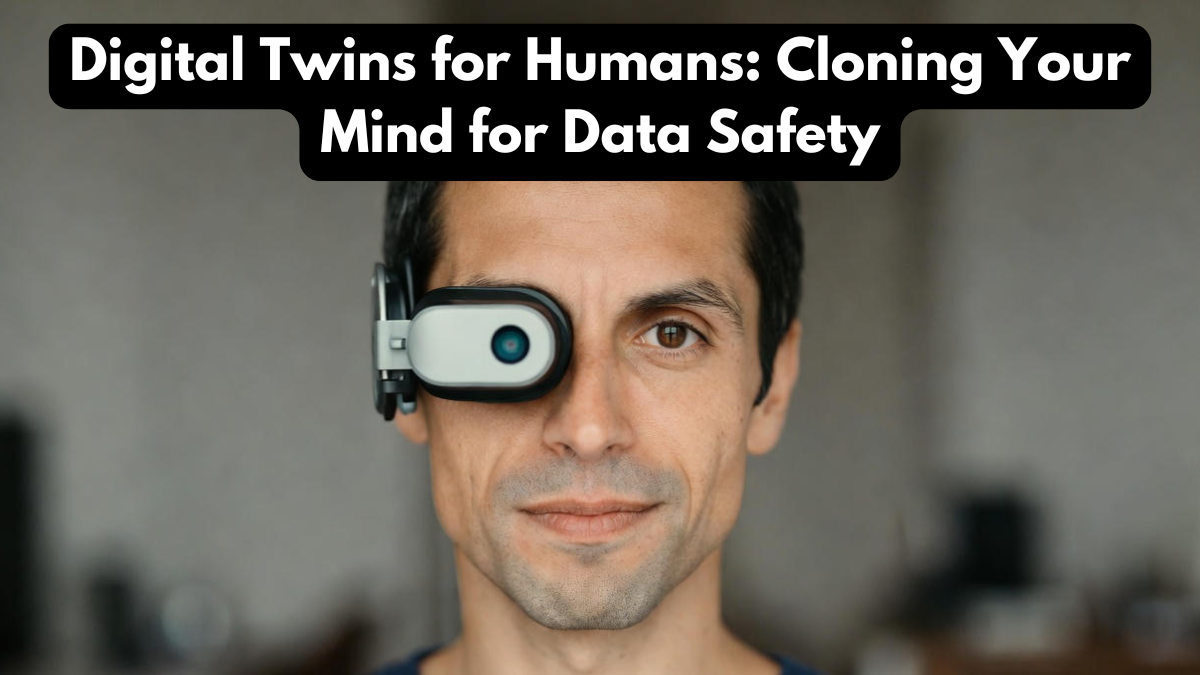The concept of digital twins humans is rapidly emerging as one of the most groundbreaking developments in the world of advanced computing and artificial intelligence. Traditionally, digital twins were used in engineering and manufacturing to create virtual replicas of machines and systems. Today, this idea is being extended to human consciousness through highly sophisticated mind backup technologies. These innovations aim to build detailed digital versions of a person’s memories, emotions, habits, and mental patterns. As research accelerates, digital twins humans may soon allow individuals to preserve their identity, enhance their productivity, and safeguard critical knowledge.

How Digital Twins for Humans Are Being Created
Creating digital twins humans involves collecting enormous amounts of cognitive and behavioral data. Through neuroimaging, biometric tracking, and emotional analysis, AI systems reconstruct the unique mental processes of an individual. With the help of advanced mind backup tools, memories and experiences can be archived and converted into structured datasets. These datasets then form the foundation for a virtual model capable of thinking, reacting, and learning just like its human counterpart.
This process requires constant data input, allowing the digital twin to evolve alongside the person. Over time, the digital twins humans can predict decisions, offer guidance, and act as a reliable mental assistant. With the integration of mind backup, individuals can store their thought history, making it possible to retrieve and analyze cognitive patterns whenever needed.
Technology Behind Human Digital Twins
The development of digital twins humans depends heavily on neuroscience, artificial intelligence, and high-speed data processing. These systems transform raw brain signals into meaningful insights, enabling AI models to simulate human-like cognition. The use of mind backup ensures long-term preservation of thoughts and decision-making habits.
Below is a table that highlights the main technologies enabling the creation of digital twins humans:
| Technology | Function | Benefit |
|---|---|---|
| Neural Mapping Tools | Capture brainwave patterns | Helps build accurate mental replicas |
| Behavioral AI Models | Analyze habits and decisions | Creates realistic mental simulations |
| Cloud-Based Mind Backup | Stores memories and cognitive data | Ensures long-term preservation |
| Emotional Recognition Systems | Track mood and emotional changes | Enables human-like emotional response |
| Predictive Intelligence Engines | Forecast future decisions | Enhances personal planning and productivity |
Using these technologies, digital twins can assist in planning, learning, problem-solving, and even emotional regulation. With mind backup, individuals gain access to a mental archive that preserves crucial experiences.
Benefits of Human Digital Twins
The benefits of digital twins humans extend far beyond convenience. These advanced models can serve as personal assistants, emotional support systems, and knowledge-preservation tools. With built-in mind backup features, users can revisit forgotten memories or lost insights.
Key benefits include:
- Enhanced personal productivity
- Improved mental health monitoring
- Access to archived thoughts and experiences
- Advanced decision-making support
- Consistent emotional tracking
- Preservation of knowledge for future generations
In professional settings, digital twins humans can support high-pressure decision-makers such as doctors, scientists, and executives. By analyzing past patterns through mind backup, these digital twins can offer suggestions that align with the person’s natural way of thinking. This not only increases accuracy but also reduces stress and cognitive overload.
Future Scope of Digital Twins and Mind Backup Technologies
The future of digital twins humans is incredibly promising. As AI becomes more advanced, digital replicas will become more precise, capable of simulating human emotion, creativity, and intuition. In the coming decades, mind backup may allow individuals to preserve their memories indefinitely, even after physical aging or illness affects their cognitive functions.
Researchers believe that human digital twins could be used in virtual workplaces, online education, and even personal relationships. A digital twins humans model could attend meetings, manage communication, or operate virtual environments on behalf of its physical counterpart. With stronger mind backup systems, society may eventually gain the ability to transfer a lifetime of knowledge into future generations.
Conclusion
The development of digital twins humans marks a revolutionary step in the evolution of human–AI integration. Supported by advanced mind backup technologies, these digital replicas offer unprecedented opportunities for personal growth, memory preservation, mental enhancement, and lifelong learning. As innovation continues to accelerate, the future may see a world where individuals rely on their digital twins as extensions of their own minds, ensuring their thoughts and experiences remain protected for generations to come.
FAQs
What are digital twins for humans?
Digital twins humans are virtual replicas of a person’s mind, habits, and emotions created through AI and supported by mind backup technology.
How does mind backup work?
Mind backup stores memories, behavior patterns, and thought processes in digital form to preserve them long-term.
Can digital twins think like humans?
Yes, digital twins humans use advanced AI models to simulate human decision-making, emotions, and cognitive behavior.
Are digital twins safe to use?
With proper encryption and privacy systems, digital twins humans can be securely protected from unauthorized access.
Will digital twins replace human consciousness?
No, digital twins act as extensions, not replacements. They support memory preservation and decision-making through mind backup systems.
Click here to learn more